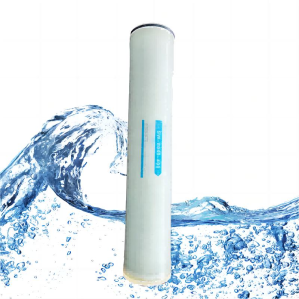
X Membrane Co.,Ltd is a high-tech enterprise and one of top RO membrane manufacturers specializing in the research and development, production, membrane technology application and engineering design of hollow fiber membrane separation technology in China located in Nanjing, Jiangsu Province, China.
X Membrane(founded in 2014) is aiming to build a world-renowned brand for clients in different industries which could use mbr membranes, ultrafiltration membranes, reverse osmosis membranes.
Introduction
Industrial wastewater poses significant environmental challenges due to its complex composition and high pollutant loads. Effective treatment technologies are essential to mitigate these impacts and comply with stringent environmental regulations. Among various treatment methods, reverse osmosis (RO) membranes have gained prominence due to their efficiency in removing a wide range of contaminants, including dissolved salts, organic compounds, and heavy metals. This article explores the application of reverse osmosis membranes in industrial wastewater treatment, highlighting their advantages, challenges, and future prospects.
Mechanism of Reverse Osmosis
Reverse osmosis is a pressure-driven separation process that utilizes a semipermeable membrane to remove contaminants from water. When pressure is applied to the feed water, water molecules pass through the membrane, leaving behind the dissolved and suspended impurities. The permeate, or purified water, is collected on one side, while the concentrated waste, known as the brine or reject stream, is discharged or further treated.
Applications in Industrial Sectors
-
Chemical Industry: The chemical industry produces wastewater containing high levels of organic and inorganic substances. RO membranes are effective in reducing chemical oxygen demand (COD) and removing specific contaminants such as phenols and heavy metals, thereby enabling the recycling of treated water within the industry.
-
Textile Industry: Textile manufacturing generates wastewater laden with dyes, salts, and other chemicals. RO treatment helps in recovering water and salts from dye effluents, making the process more sustainable and reducing freshwater consumption.
-
Pharmaceutical Industry: Pharmaceutical wastewater contains active pharmaceutical ingredients (APIs), organic solvents, and other hazardous compounds. RO membranes ensure the removal of these contaminants, allowing the reuse of water and reducing the environmental impact of pharmaceutical effluents.
-
Food and Beverage Industry: This sector generates wastewater with high organic loads, including sugars, proteins, and fats. RO systems are employed to concentrate and recover valuable by-products and produce high-quality water suitable for reuse in various processes.
Advantages of RO Membranes
- High Efficiency: RO membranes can remove up to 99% of dissolved salts and a wide range of contaminants, providing high-purity water suitable for reuse.
- Compact Design: RO systems have a relatively small footprint compared to other treatment technologies, making them suitable for space-constrained industrial settings.
- Scalability: RO systems can be easily scaled to meet varying wastewater treatment needs, from small-scale operations to large industrial facilities.
Challenges and Limitations
- Fouling: Membrane fouling, caused by the accumulation of suspended solids, organic matter, and microbial growth, can reduce the efficiency and lifespan of RO membranes. Regular cleaning and maintenance are required to mitigate fouling.
- Energy Consumption: RO processes require significant energy to maintain the high pressure necessary for separation, leading to higher operational costs.
- Brine Disposal: The management of concentrated brine is a critical challenge, as it contains high levels of pollutants and requires appropriate disposal or treatment methods.
Future Prospects
Advancements in membrane technology and process optimization are driving improvements in the efficiency and cost-effectiveness of RO systems. Innovations such as low-fouling membranes, energy recovery devices, and hybrid treatment processes are expected to enhance the performance and sustainability of RO in industrial wastewater treatment. Additionally, increased regulatory pressures and a growing emphasis on water conservation and sustainability are likely to spur wider adoption of RO technologies across various industries.
Conclusion
Reverse osmosis membranes play a pivotal role in the treatment of industrial wastewater, offering a robust solution for the removal of diverse contaminants and enabling water reuse. Despite challenges such as fouling and energy consumption, ongoing technological advancements hold promise for overcoming these limitations. As industries strive to achieve greater environmental sustainability, the application of RO membranes in wastewater treatment is set to expand, contributing to more efficient and sustainable industrial processes.





 Language
Language




 Network Supported
Network Supported